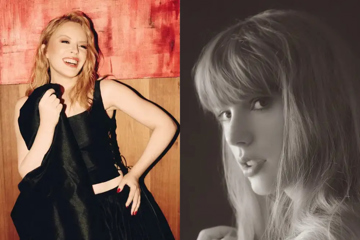The Only Scary Thing About 'It' Is How Tired & Trope-Filled Everything Is
Or: You can't spell 'bland mediocrity' without 'It'.
IT

Wait, this is it? This is It? The Stephen King adaptation that was going to scare a whole new generation? The movie that anticipation has been building towards since, like, season one of Stranger Things ended? The creepy-clown horror-movie of our nightmares?
It’s time to burst that floating red balloon of marketing hype; to reveal that, like a magic trick gone awry, It has been all canny sleight-of-hand build-up, leading only to a cinematic spectacle that anticlimactically fizzles, air leaking out of it as it goes.
Don't miss a beat with our FREE daily newsletter
The record-breaking trailer set the table but now comes the actual film. And it ain’t much. Andy Muschietti’s new version of It isn’t some new horror classic. It’s not even particularly good. Especially because, most of all, it isn’t the stuff of bad dreams. Unless suffering through 135 long minutes with nary a scare is your version of a nightmare.
Let’s start with the fucking clown. Clowns are creepy. This is fact. They haunt sleepless children, and disturb anxious adults. John Wayne Gacy — one of the most notorious serial-killers the world has known — was a fucking clown. The Pennywise from the 1990 It mini-series — Tim Curry in make-up and dentures, grinning hideously — was, is, and shall remain forever horrifying. But do you know what isn’t scary? The cavorting, vaguely clown-ish pixels in this It. For all the film’s transparent attempts to play up the hideous sight of a clown, the only thing terrifying about this Pennywise is how many Quebécois visual-effects technicians slaved away to create something so utterly non-threatening.
Perhaps the CGI-eyesore quality of this killer clown wouldn’t be a big deal if he dwelled in the shadows; if, like any horror movie worth its salt, It played with the powers of suggestion and anticipation, keeping its horrors in the shadows, unknown. Only, here, Pennywise (played, with plentiful mo-cappin’, by Swedish babe Bill Skarsgård, whose dad and brother you already know), is front-and-centre. We first meet him five minutes into the film, with the sight of his colour-changing, glow-in-the-dark, video-game-villain eyes ringing alarm bells for anyone hoping for an actual human beneath the greasepaint.
And if ever anything is going to remind you that there’s nothing to be scared about when watching a film — that it is just a game of pretend, lights projected onto a screen — then it’s the sight of terrible-looking CGI. Maybe this makes for an effective spectre if you’re terrified of the uncanny valley. Or, moreso, you get scared when collections of pixels run towards the camera, perhaps while screaming. Or while an ‘eerie’ version of children singing Oranges & Lemons plays.
The spooky-nursery-rhyme cliché is just one of many hackneyed tropes that get wheeled out here. There’s its cousin: the spooky tinkling music box. There’s the little kid — who is, of course, a supernatural spectre — running away from camera. There’s electricity flickering, making a hissing noise as the lights go on and off. There’s old photos where apparitions of the villain appear. There’s a dark basement. There’s, seriously, an abandoned old Haunted House that looks more like Tim Burton storybook kitsch than actual building.
That building is housed on the wide, sunny streets of Small Town America, where the familiar smiling façade of pre-fab suburbia houses the obligatory evil secret; 20th-century prosperity sown in the spilt blood of frontier settlement. It’s 1988/89, which means there’s plentiful reference to old movies (Gremlins, Lethal Weapon 2, Nightmare On Elm Street 5), the original Street Fighter arcade game, and New Kids On The Block, and one memorable home-renovation make-over set to The Cure’s Six Different Ways. That also makes it 27 years before the obligatory contemporaneous sequel can be set, but this is another story.
The great hook for It is that its villain isn’t just a creepy clown, but someone who can mirror the greatest fears of the children it stalks. This is an amazing premise that the screenplay — by deposed director Cary Fukunaga, debutante screenwriter Chase Palmer, and Annabelle creator Gary Dauberman — only occasionally bothers to really dig into. With a gang of seven kids to get to (they’re called the Losers' Club, which is really just King shamelessly pandering to his audience), characterisation is stretched thin, with each standalone moment of personalised fearmongering often feeling rushed, indistinguishable from the last.
The kids the film has employed in its key roles are great: Finn Wolfhard in ’80s wardrobe offers cheap, fleeting pleasure to Stranger Things fans; Jaeden Lieberher is one of the best child actors in Hollywood; Jeremy Ray Taylor gives a fantastic, unexpectedly layered performance, and Sophia Lillis scans as the film’s likely breakout star.
Lillis is at the centre of the one moment where the central premise is truly exploited, and Muschietti stages a genuinely memorable scene. Lillis has already exhibited shame at the arrival of her period, having to buy tampons a new, terrifying prospect. This fear is located right in the sweet spot of that favourite King theme: the moment in which childhood ends. And, so, when It comes calling on Lillis at home, in her bathroom, blood and hair come spraying out of the bathroom sink, this river of blood reminiscent, of course, of past King adaptations The Shining and Carrie (neither of which It is, otherwise, comparable to at all). Blood and hair are great totems of genre cinema, but each is also a potent symbol of imminent puberty, and nascent sexuality.
And they’re especially loaded symbols because Lillis is a victim of domestic sexual abuse, living alone with a rapey dad. In It’s world, the adults are scant, and all monstrous. Whether they’re rapey, sleazy, controlling, condescending, cruel, or just the original Angry Black Captain from TV’s 21 Jump Street. When the evil clown convinces suggestible kids to kill their parents, it’s hard to know whether to cower or cheer; needless to say, the tidy morality here lets you know that those dead folks got what they deserved.
Which leads me to my least-favourite character in this entire film: the 2-Dimensional Psychotic Bully Who Only Glowers And Frowns And Tortures But His Terrible Characterisation Is All OK Because His Dad Beats Him And Thus He’s Trapped In The Cycles Of Abuse. He’s, in many ways, the real villain of the piece, making lives living hell for the Losers' Club. I’m pretty sure he doesn’t have a line of dialogue that isn’t threatening someone. It’s hard to know if the kid playing him, Nicholas Hamilton, can act at all, because he’s handed a role written to one, blaring note.
And speaking of notes: Banjamin Wallfisch’s score forever hits you over the head with rankly obvious musical motifs, so eager to tell you what you should be feeling that they leave little room to feel anything. A bad score may seem like a minor quibble, but here it’s symbolic of the whole. This It movie has no faith in its audience’s intelligence, favours obviousness at every turn, and believes the best way to scare you is with some CGI equivalent of a loud ‘boo’.
Stephen King may’ve decreed this It his favourite cinematic adaptation of his work, but, then again, he hated The Shining, so don’t listen to him. Listen to your old pal Film Carew: this It lands somewhere between brutal disappointment and bland mediocrity. Your mileage may vary, but the end results won’t.
SPOOKERS

There’s more terrifying clowns in Spookers, but it’s not a horror movie. It’s, instead, a documentary portrait of the people who work at the titular tourist spot, the world’s only dedicated, year-round horror theme-park. It’s located in an abandoned psychiatric hospital south of Auckland, where daytrippers drive in for a night of being shit-scared; quite literally, in one memorable — Code Brown — moment. Habicht, initially, pokes at the human desire to be scared, but, soon, his natural inquisitiveness takes over.
In his last film, the mythos-deflating rockumentary Pulp: A Film About Life, Death, And Supermarkets, Habicht was more interested in chatting up random people on the street than worshipping at the titular rockband’s feet, and, here, his fondness for chinwaggin’ shapes the film. Studying the psychology of willing submission to terror only has so much interest to such a people-person.
So, soon, Spookers starts to survey the humans behind the clown make-up. Via questioning inquisitive, playful, and respectful, Habicht gets to know them, to discover how each person ended up, here, both at theme-park and in front of his camera. They’re, routinely, oddballs and outcasts, those struggling to find their identity, dealing with comings-out and crises of faith. What results is, in many ways, not the film you’re expecting, Habicht finding less absurdist humour than you’d expect, more sentimental sweetness and widely-accessible warmth.







